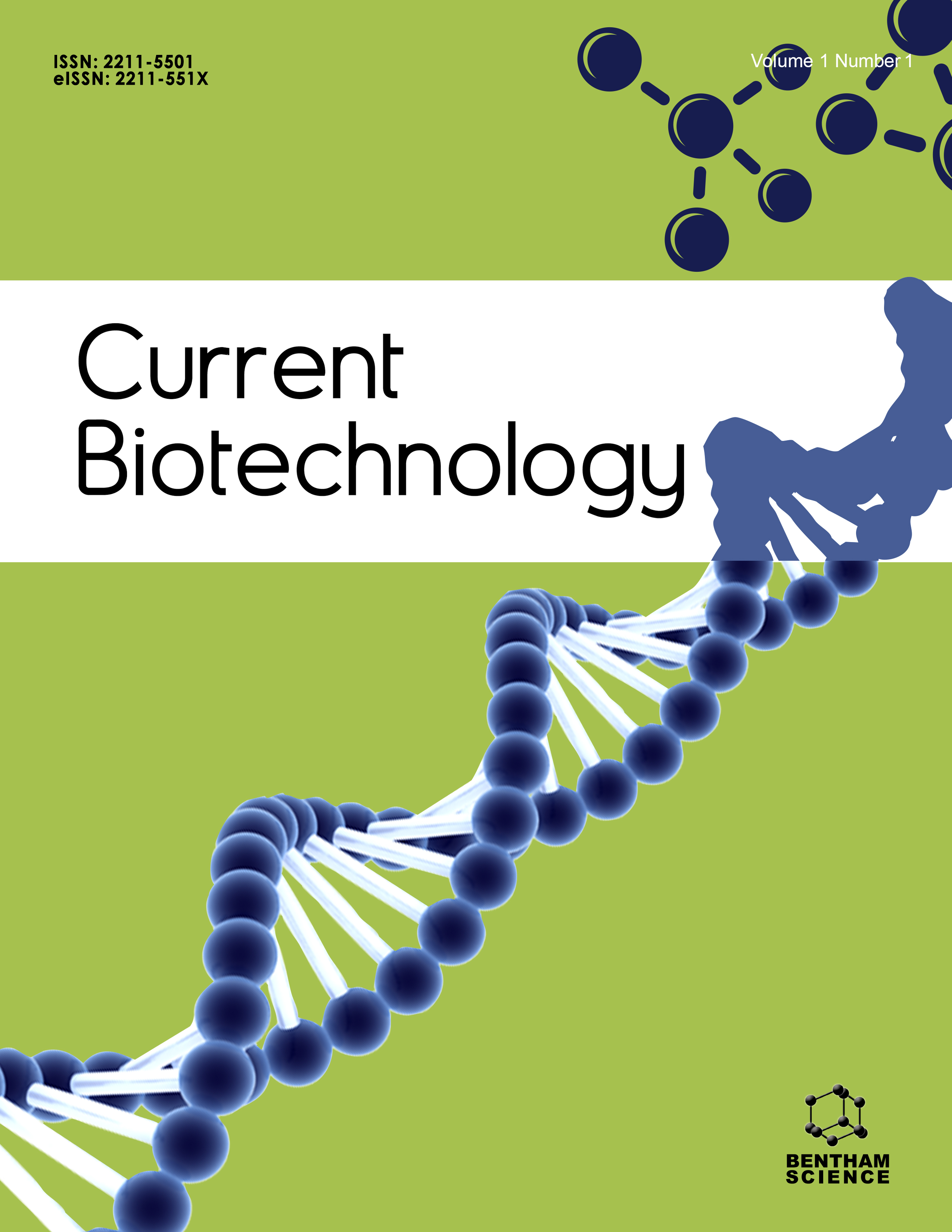- Home
- A-Z Publications
- Current Biotechnology
- Previous Issues
- Volume 6, Issue 3, 2017
Current Biotechnology - Volume 6, Issue 3, 2017
Volume 6, Issue 3, 2017
-
-
Chitin and N-acetylglucosamine Metabolism in Fungi - A Complex Machinery Harnessed for the Design of Chitin-Based High Value Products
More LessAuthors: Romana Gaderer, Verena Seidl-Seiboth and Lisa KappelBACKGROUND: Chitin is one of the world’s most abundant biopolymers, but in contrast to cellulose its potential has so far been fairly underrated. Compared to cellulose, chitin features an additional amino-group on the hexose sugar ring that renders it a promising substrate for functional biopolymers in biomedical applications as well as biochemical synthesis of specialty and fine chemicals. Fungi with specialized life styles, Read More
-
-
-
Saccharomyces cerevisiae as Cell Factory for the Production of Plant Natural Products
More LessAuthors: Hilde C. Coumou, Pia D. Petersen and Uffe H. MortensenBackground: Plant natural products (PNPs) play a key role in human health and life quality through the treatment of diseases and as supplements in the food and healthcare industry. These high-value metabolites are traditionally extracted from the natural resource, but ongoing research is exploring the possibilities to construct efficient microbial cell factories that can replace current production methods. Objective: This revi Read More
-
-
-
Fungal Glycolipids as Biosurfactants
More LessAuthors: Michael Günther, Susanne Zibek and Steffen RuppBackground: Fungi are key organisms in the biotechnological production of a plethora of products relevant for mankind. Recently several new products from fungi have entered the markets, including biosurfactants. Biosurfactants are microbial produced surface active compounds with emulsifying properties which proved to be an interesting alternative to petrochemically or palm oil derived surfactants. Methods: We hav Read More
-
-
-
Optimization Strategies for Microbial Itaconic Acid Biosynthesis
More LessAuthors: Laura van der Straat and Leo H. de GraaffBackground: Itaconic acid is a C5 dicaboxylic acid that can serve as a building block to be used in industry to synthesize polymers that are currently based on petroleum-based components. Methods: An overview of the recent literature on microbial itaconic acid production is given in this minireview. The biosynthetic pathways as they are known in Aspergillus terreus and Ustilago maydis are described. Major advances hav Read More
-
-
-
Sugar Induced Modification in Glycolipid Production in Acremonium sp. Revealed by LC-MS Lipidomic Approach
More LessBackground: Marine-derived fungi are an underexploited source of lipids for health and nutrition. Little is known about the impact of sugar type on the lipid diversity produced by a marine-derived fungi. Objective: Traditionally glucose is used as the main sugar source for fungal growth. Thus, this study aimed to reveal the glycolipid alteration induced by glucose replacement by galactose. Methods: The marine-derived Acremonium Read More
-
-
-
Glucose Oxidase Production from Sustainable Substrates
More LessAuthors: Daniel P. Kiesenhofer, Robert L. Mach and Astrid R. Mach-AignerBackground: Glucose oxidase (GoxA) catalyzes the reaction from β-D-glucose to gluconic acid. It has a wide range of applications, for example as a sugar sensor for diabetes monitoring or as a prominent additive in food industry. The fungus Aspergillus niger naturally expresses and secretes GoxA. Currently, GoxA is produced by A. niger on yeast peptone dextrose media or by yeasts on media containing sugars in high concen Read More
-
-
-
Saccharomyces cerevisiae as a Model for Screening the Effects of Volatile Organic Compounds
More LessAuthors: Shannon U. Morath, Caitlin E. Boland and Joan W. BennettBackground: Volatile organic compounds (VOCs) are gaseous at room temperature, readily dissipate throughout the environment, and may be of anthropogenic or biogenic origin. Despite an increasing scientific interest in the role VOCs play in interspecific interactions, there remains a limited understanding of the impact of VOCs on fungi living in a shared space. Objective: In this study, we aimed to determine the sensitivity of t Read More
-
-
-
Plant Growth Promoting Endophytes and their Interaction with Plants to Alleviate Abiotic Stress
More LessBackground: There is a growing interest in utilizing endophytes as biofertilizers or biological controls. Beneficial effects may be obtained by synthesizing phytohormones, enzymes and antagonistic substances, fixing nitrogen and carbon dioxide, inducing defence mechanisms and competing colonizing sites and nutrients. Endophytes enhance plant growth and health through plant growth promoting rhizobacteria. E Read More
-
-
-
Nutritional Evaluation of Whole and Lipid-Extracted Biomass of the Microalga Scenedesmus sp. AMDD for Animal Feeds: Simulated Ruminal Fermentation and In Vitro Monogastric Digestibility
More LessAuthors: Sean M. Tibbetts and Alan H. FredeenBackground: Scenedesmus sp. AMDD (S-AMDD) has been the focus of several studies to assess its potential as a feedstock for biofuels and bioremediation, while the evaluation of its potential suitability as a novel animal feed ingredient has only just begun. In an initial study, S-AMDD demonstrated rapid growth rate and biomass productivity during exponential growth phase and the resulting biomass appeared to have Read More
-
-
-
Cross-Seeding Interaction Between Amyloid β and Tau Protein can Enhance Aggregation
More LessAuthors: Mary Dutta, Rajkalyan Chutia and Venkata Satish Kumar MattaparthiBackground: The two pathological hallmarks associated with Alzheimer’s disease (AD) include the accumulation of senile plaques and the generation of neurofibrillary tangles. Although it is a known fact that both amyloid beta (Aβ) and Tau exist together in mitochondria, to date, there is no reasonable explanation for the Aβ and Tau interaction in particular. Objective: The cross-seeding interactions between Aβ and Tau we Read More
-
Most Read This Month
Article
content/journals/cbiot
Journal
10
5
false
en


